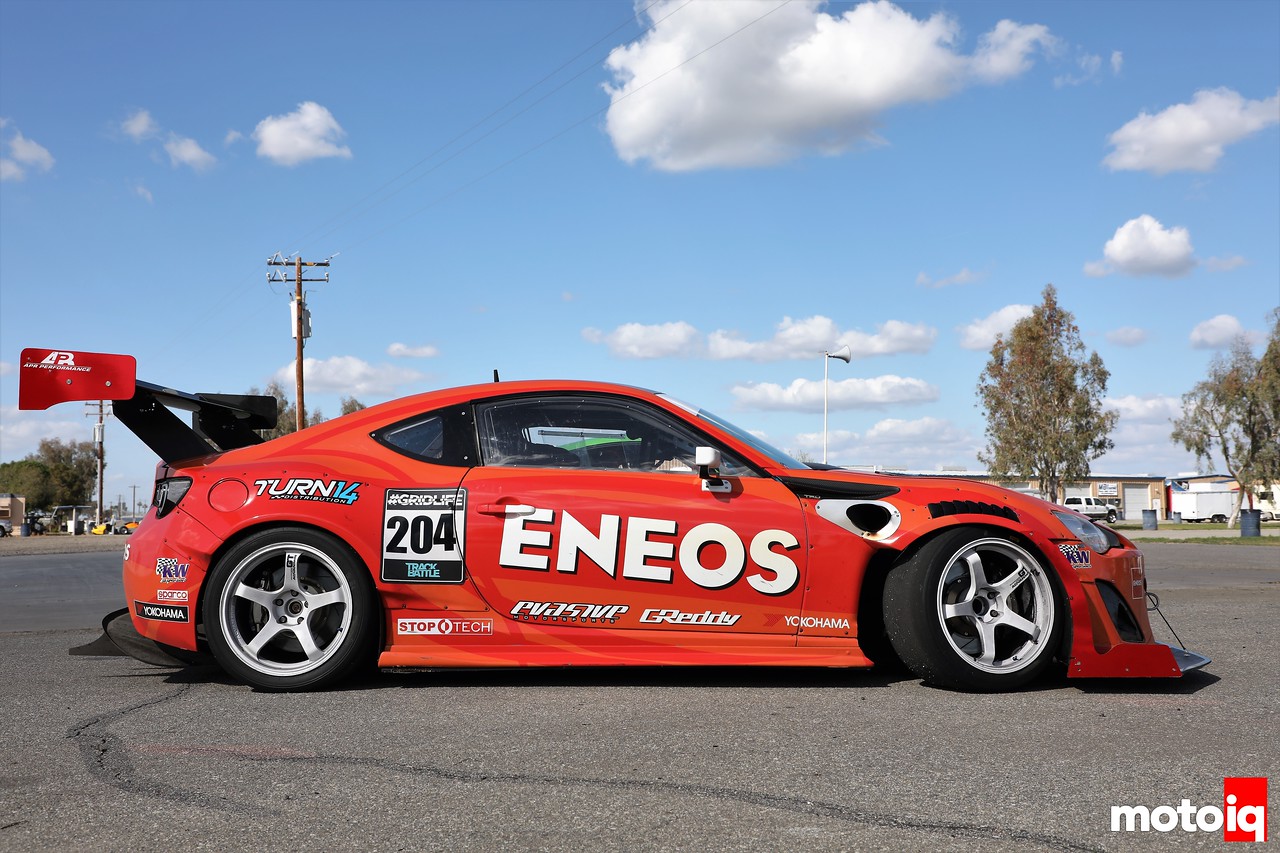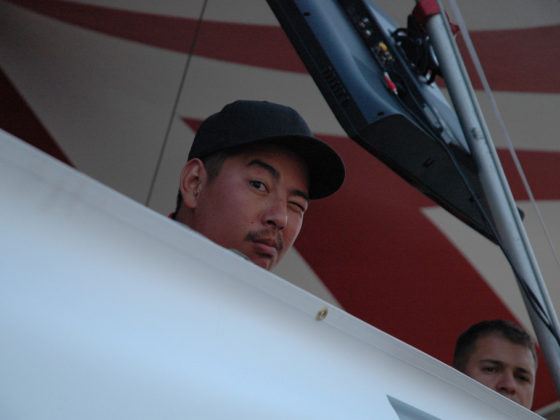
The front fenders are generously louvered to relieve pressure in the wheel wells. This is important for this car since the high altitude operation means big fluid coolers and a lot of air is being introduced into the wheel wells via the exit vents for the coolers. The team would like to have more venting at the exit of the wheel wells as well but are worried about rule compliance.

The car’s base wide body kit is a Rocket Bunny V1 widebody. The hood is generously vented since it was not possible to make a shaped duct for the huge heat exchangers at the nose of the car for the radiator exit air. The vents help reduce the positive pressure on the bottom of the hood caused by radiator air backing up in the engine compartment. This improves both cooling and downforce.

The side skirts have a small stangation plate to help recover some pressure near the rear wheels.

The rear diffuser is from an Audi R8 GT3 racecar! The large vertical strakes were added by Evasive Motorsports. These help keep the airflow attached especially by the center where the angle of of the diffuser is over 12 degrees where the airflow would typically separate.

The rear diffuser might get redone in the near future make it bigger and to reduce the angle of it.

An APR dual element GT wing is CFD designed for good function. The team is contemplating going to a wider wing or a triple element to get more downforce in the thinner air of Pikes Peak. The wing mounts directly to the chassis.




8 comments
Great build and write up. One small note is that the vertical strakes on a diffuser limit spanwise flow. Without them, the air will tend to move laterally across the diffuser surface. Obviously, that reduces the effectiveness of the diffuser. Of course, there’s a small drag penalty, but it’s more than made up for in the aero efficiency.
Fun fact: These strakes were first developed for the swept wing jet fighter aircraft. Because the ailerons are generally located near the wingtips (for the maximum moment arm) the control surface on swept wings was losing ability due to boundary layer separation. This was because the swept wing caused the air to turn outward (spanwise flow.) By introducing a wing fence (vertical strake projecting above boundary layer) you limit spanwise flow and the aileron remains effective, so even under extreme yaw angles.
We did it mostly to try to keep the flow attached with a less than optimal angle. We used a pre-made diffuser to expedite stuff. We might redo it later if there is time and money.
Yeah, it’s difficult to know if the flow is staying attached or separating. Obviously, you can’t use wool tufts, because gravity.
Maybe you could make your own ‘flowviz’ paint, but I think that gravity would make that difficult, too.
Not many good options without a wind tunnel. And no reason to spend $$$ unless you know it’s going to work.
Also, the front end should always see the bulk of the aero effort. If the front isn’t working properly, then it won’t matter what you do at the rear. The flow will be turbulent by then, anyway.
Best of luck on Pikes Peak.
page 5 pic 1
it looks like there’s what looks like a delrin bushing on the knuckle between where the tie rod and LCA connect to it. From what I can tell its between 2 rigid non-moving parts… and its not in the pics of the kit on the Wisefab website… whats its purpose?
It’s a steering stop.
oh i see, that makes sense…
I was low key hoping to see a double wishbone conversion similar to what the HKS time attack car did
Not legal for our events!
that makes sense… I didn’t really consider that